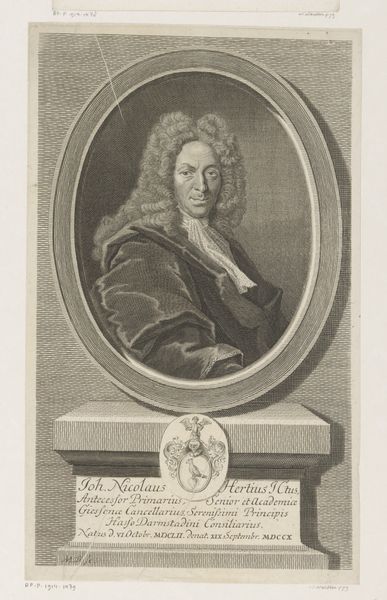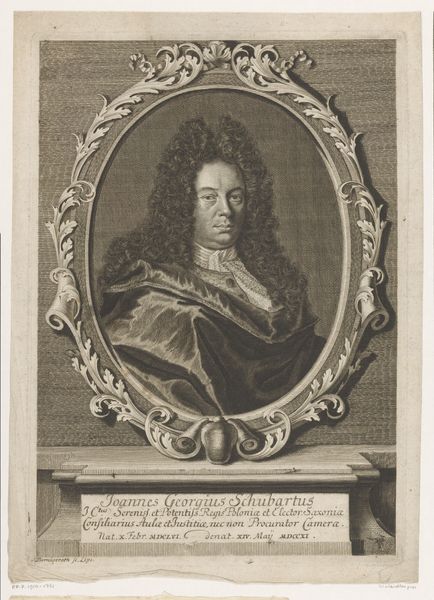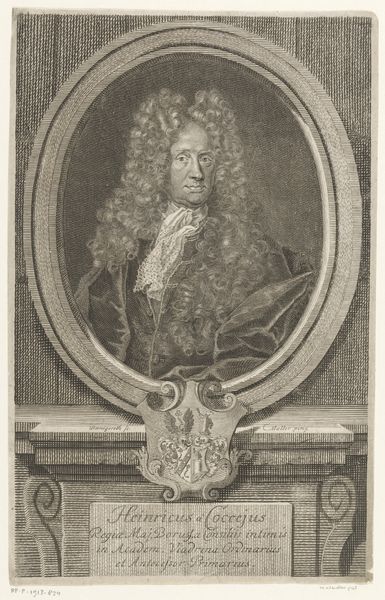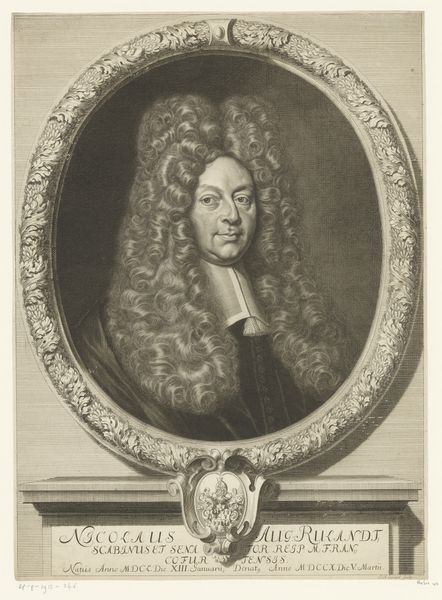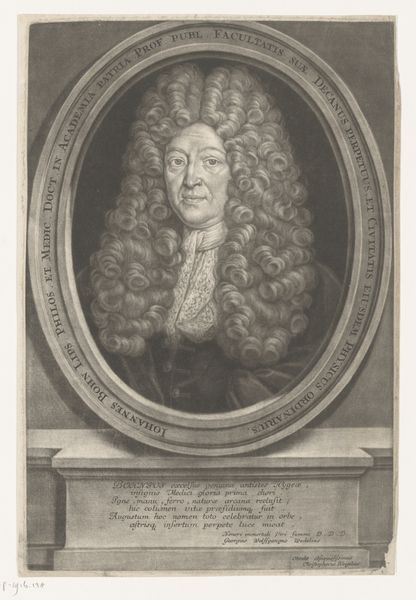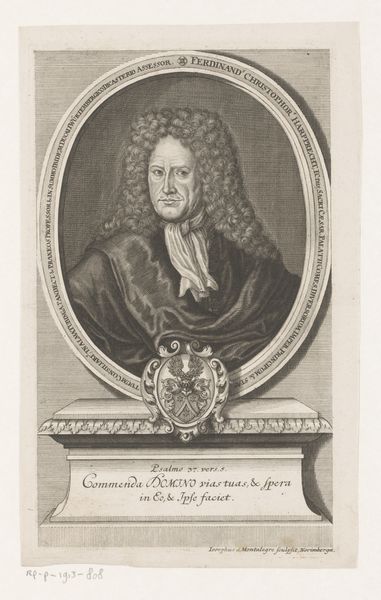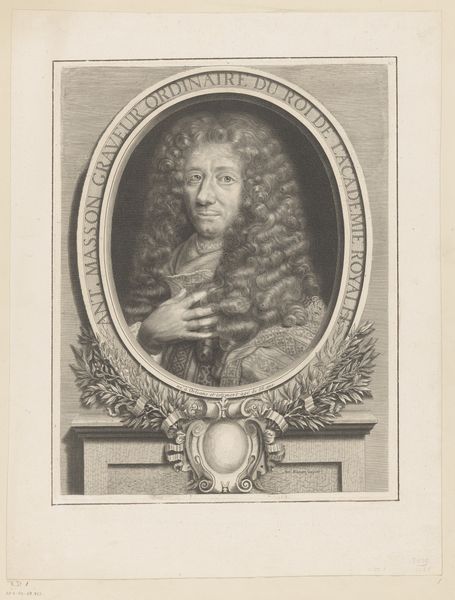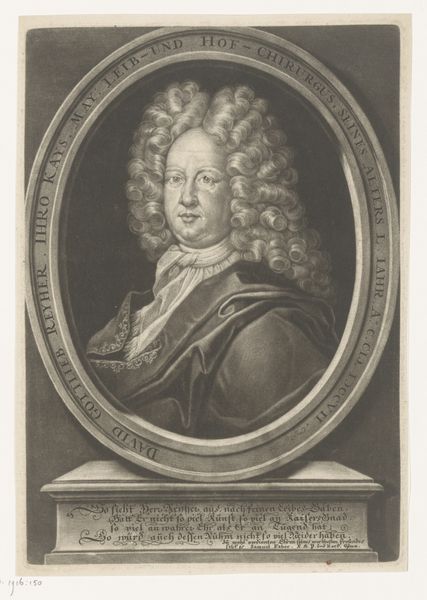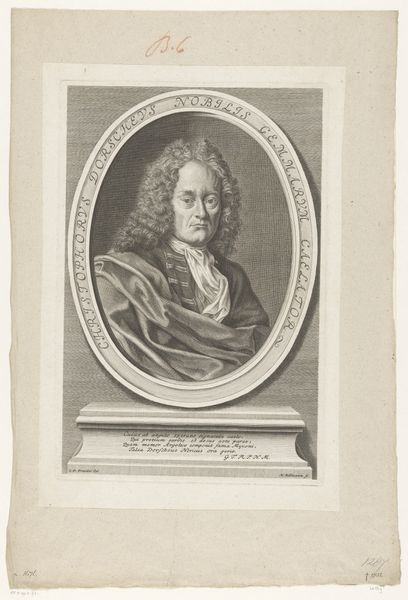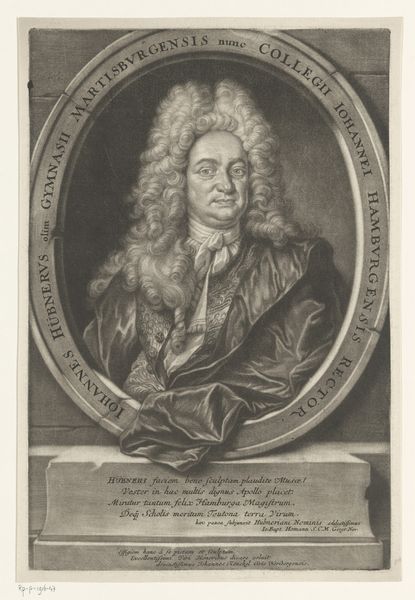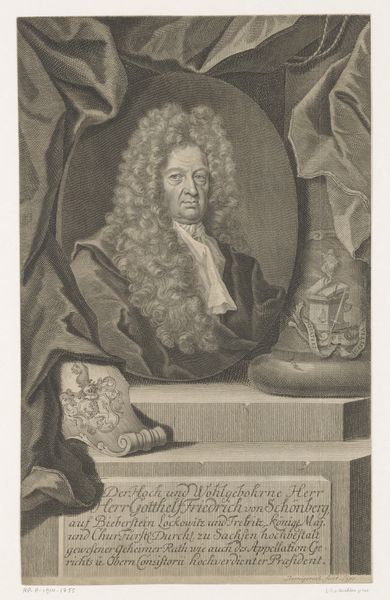
print, engraving
#
portrait
#
baroque
# print
#
old engraving style
#
historical photography
#
line
#
history-painting
#
engraving
Dimensions: height 270 mm, width 177 mm
Copyright: Rijks Museum: Open Domain
Curator: Here we have Martin Bernigeroth's "Portret van Arnold Wesenfeld", crafted in 1707. It’s an engraving, currently held at the Rijksmuseum. Editor: Well, isn’t that just a glorious wig? It’s almost swallowing him whole. Seriously, it's the first thing that grabs you. I feel like he might wink, like a grumpy celestial from some long-lost chapter in folklore. Curator: The wig, and the elaborate lace jabot, are very much symbols of status and intellectual prowess of the Baroque period. The engraving captures not just Wesenfeld’s likeness, but also his societal role. He was a professor of moral philosophy. It mirrors back on what we associate with philosophers. Editor: That inscription underneath does sound weighty. He looks… well, a bit burdened, honestly, maybe overwhelmed by the very rationality he professed! Is that me reading too much into a squiggle of ink? Or, in this case, meticulously etched lines? Curator: Not at all. Consider the oval frame itself, adorned with ribbons. Oval portraits, particularly during that period, served as emblems of importance and achievement. Framing contains the subject and the gaze of the viewer. It also makes him timeless and permanent. Editor: It gives it the quality of a slightly haunting cameo—like it could come alive any moment and mutter about the crushing weight of philosophical responsibility. I mean, that's some heavy stuff to engrave. I find myself wondering about his students, like what their questions were. Curator: Engravings like this were often commissioned as ways to disseminate knowledge and images of prominent figures. It’s a form of early social media, sharing Wesenfeld’s image beyond his immediate circle. The lines are so carefully wrought that the texture comes alive with minute hatching marks in shadow areas to suggest volume, depth. This meticulous method creates an enduring record, almost as if meant to carry wisdom to new centuries. Editor: It succeeds, wonderfully. His gaze, the meticulous linework, the formal composition, all build toward a strong symbolic impression. Like he holds some precious and old story about reason. Even with that wild hair. I never considered rationality could look like that. Curator: Indeed. It makes one ponder on representation and how individuals consciously shaped and shared their identity during the 17th and 18th centuries. Editor: For me it prompts thinking about wisdom across time. I look at Wesenfeld, rational mind as I am certain he had, captured on something so meticulous. It prompts me to think, maybe we aren’t as far from that time as we imagine ourselves to be.
Comments
No comments
Be the first to comment and join the conversation on the ultimate creative platform.
